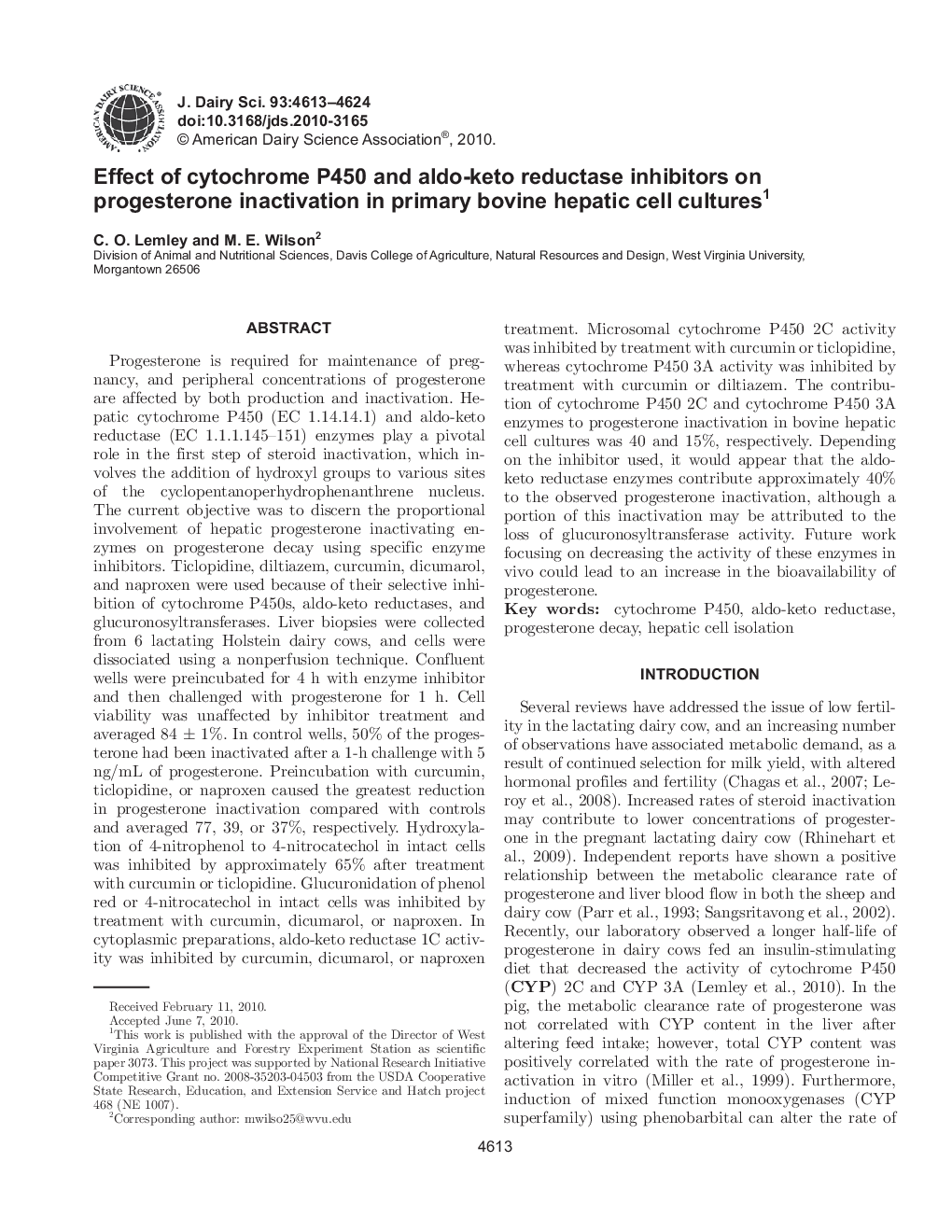| کد مقاله | کد نشریه | سال انتشار | مقاله انگلیسی | نسخه تمام متن |
|---|---|---|---|---|
| 5789870 | 1108092 | 2010 | 12 صفحه PDF | دانلود رایگان |
عنوان انگلیسی مقاله ISI
Effect of cytochrome P450 and aldo-keto reductase inhibitors on progesterone inactivation in primary bovine hepatic cell cultures1
دانلود مقاله + سفارش ترجمه
دانلود مقاله ISI انگلیسی
رایگان برای ایرانیان
موضوعات مرتبط
علوم زیستی و بیوفناوری
علوم کشاورزی و بیولوژیک
علوم دامی و جانورشناسی
پیش نمایش صفحه اول مقاله

چکیده انگلیسی
Progesterone is required for maintenance of pregnancy, and peripheral concentrations of progesterone are affected by both production and inactivation. Hepatic cytochrome P450 (EC 1.14.14.1) and aldo-keto reductase (EC 1.1.1.145-151) enzymes play a pivotal role in the first step of steroid inactivation, which involves the addition of hydroxyl groups to various sites of the cyclopentanoperhydrophenanthrene nucleus. The current objective was to discern the proportional involvement of hepatic progesterone inactivating enzymes on progesterone decay using specific enzyme inhibitors. Ticlopidine, diltiazem, curcumin, dicumarol, and naproxen were used because of their selective inhibition of cytochrome P450s, aldo-keto reductases, and glucuronosyltransferases. Liver biopsies were collected from 6 lactating Holstein dairy cows, and cells were dissociated using a nonperfusion technique. Confluent wells were preincubated for 4 h with enzyme inhibitor and then challenged with progesterone for 1 h. Cell viability was unaffected by inhibitor treatment and averaged 84 ± 1%. In control wells, 50% of the progesterone had been inactivated after a 1-h challenge with 5 ng/mL of progesterone. Preincubation with curcumin, ticlopidine, or naproxen caused the greatest reduction in progesterone inactivation compared with controls and averaged 77, 39, or 37%, respectively. Hydroxylation of 4-nitrophenol to 4-nitrocatechol in intact cells was inhibited by approximately 65% after treatment with curcumin or ticlopidine. Glucuronidation of phenol red or 4-nitrocatechol in intact cells was inhibited by treatment with curcumin, dicumarol, or naproxen. In cytoplasmic preparations, aldo-keto reductase 1C activity was inhibited by curcumin, dicumarol, or naproxen treatment. Microsomal cytochrome P450 2C activity was inhibited by treatment with curcumin or ticlopidine, whereas cytochrome P450 3A activity was inhibited by treatment with curcumin or diltiazem. The contribution of cytochrome P450 2C and cytochrome P450 3A enzymes to progesterone inactivation in bovine hepatic cell cultures was 40 and 15%, respectively. Depending on the inhibitor used, it would appear that the aldo-keto reductase enzymes contribute approximately 40% to the observed progesterone inactivation, although a portion of this inactivation may be attributed to the loss of glucuronosyltransferase activity. Future work focusing on decreasing the activity of these enzymes in vivo could lead to an increase in the bioavailability of progesterone.
ناشر
Database: Elsevier - ScienceDirect (ساینس دایرکت)
Journal: Journal of Dairy Science - Volume 93, Issue 10, October 2010, Pages 4613-4624
Journal: Journal of Dairy Science - Volume 93, Issue 10, October 2010, Pages 4613-4624
نویسندگان
C.O. Lemley, M.E. Wilson,